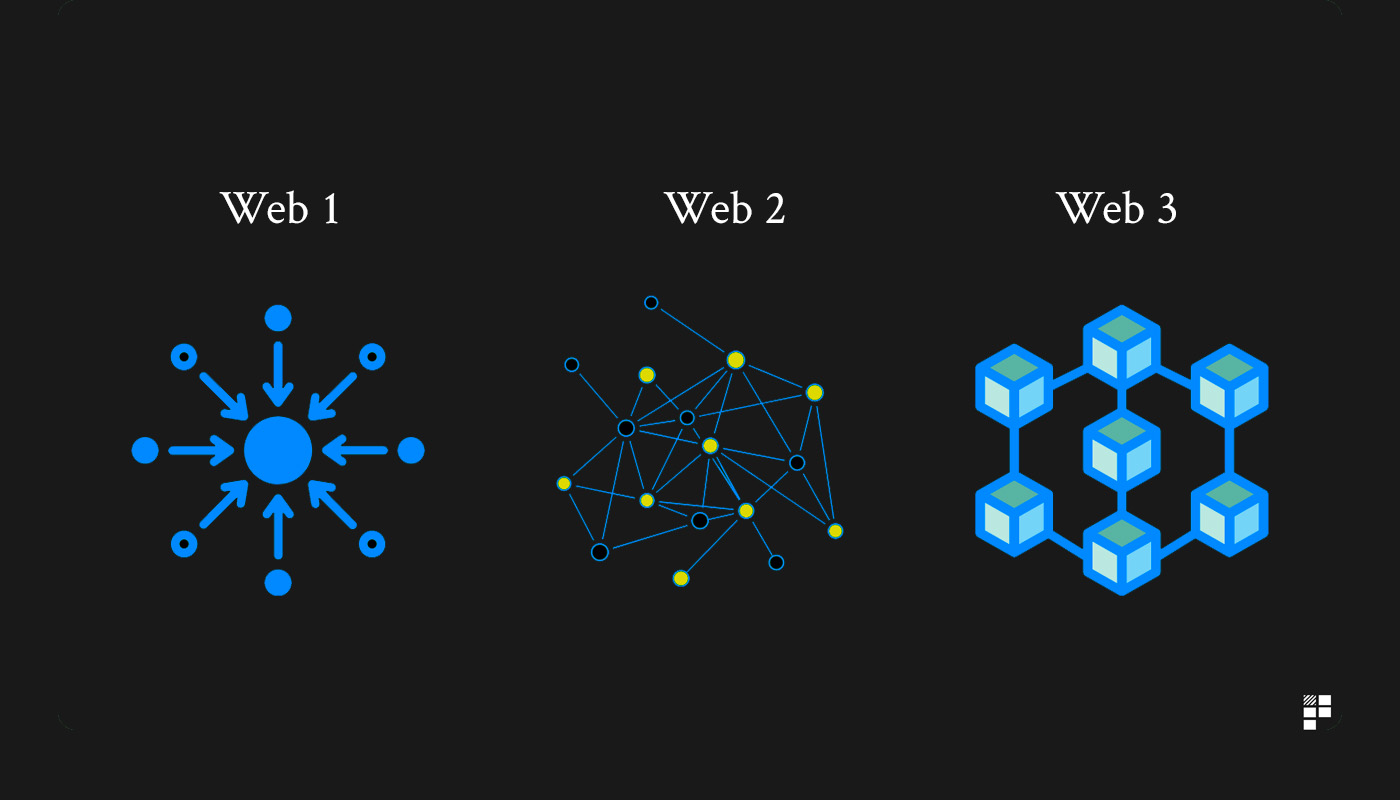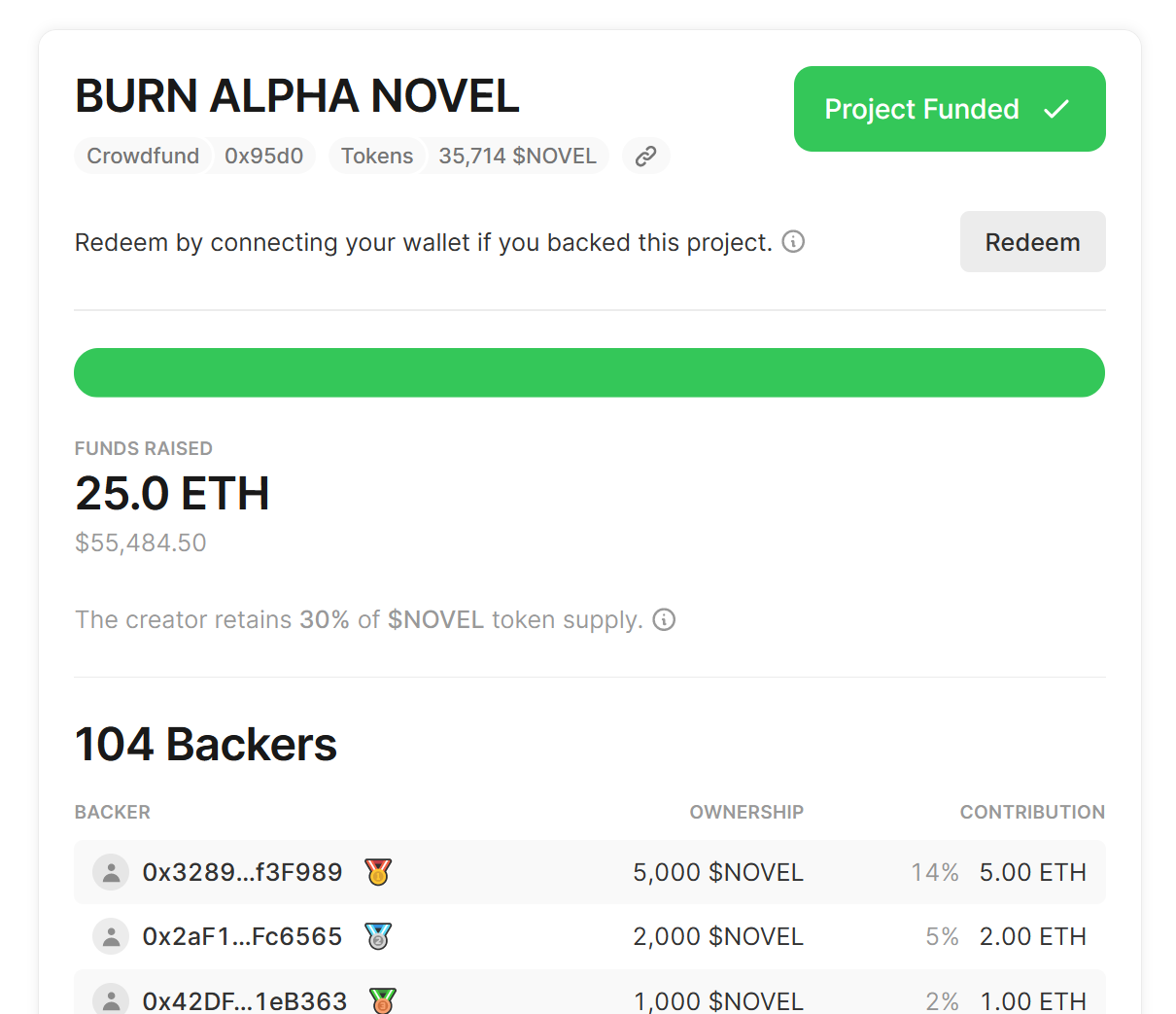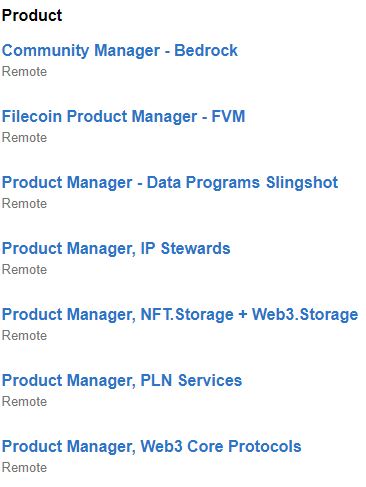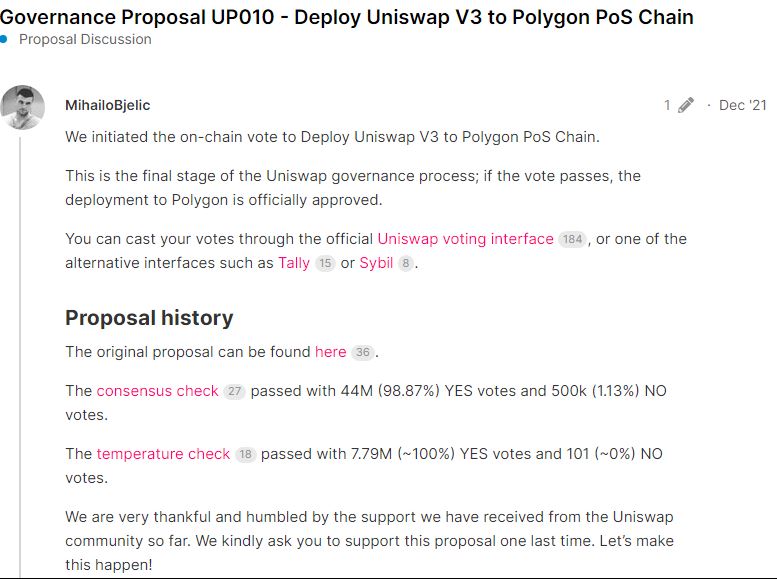Web3 For Product Managers: A Guide For The Crypto-Curious
If you’re open to taking risks and love working in a fast-paced environment, Web3 PM’ing may be a good fit
Web3 has become one of the most talked-about concepts today. Just try to count how many times “crypto”, “NFTs”, or “DeFi” appear on your Twitter timeline.
To many people, Web3 is just another technology bubble, driven in part by the desire to make a quick buck. But, if you spend enough time in the industry (as I have) and ignore the media soundbites, the value of Web3 is obvious.
Web3 is a watershed moment in technological history, the kind that happens once in a lifetime—like the birth of the Internet or the printing press. Decentralized technology is creating a new iteration of products that prioritize creating value for users over making quick profits.
In terms of product development, Web3 is significantly different from Web2, which is why I wrote this guide for product managers looking to make the switch. It’ll explain what Web3 really means, how product management fits into the picture, and describe the Web3 PM environment.
Let’s dive in!
What is Web3?

Web3 encompasses the idea of building decentralized applications (dApps)—platforms or products devoid of centralized control and management. Built on blockchains, dApps benefit from robust, failure-resistant architecture and promise users greater ownership of identity and value.
Others see Web3 as a vision of a decentralized Internet with blockchain technology serving as the foundation. Just as databases power most of the web today, blockchains power the decentralized web.
Blockchains are, in fact, similar to databases, and function as repositories of information. The difference is that the information stored on a blockchain, such as transactions, is “immutable” or unalterable.
Moreover, these databases are collectively managed by nodes in a peer-to-peer network. This means blockchains are not unilaterally controlled by anyone, protecting stored data from undue control or exploitation. In Web2, a company’s databases are fully within its control and it can decide what exactly happens to the information, for better or worse.
Unpacking the benefits of Web3 for businesses and consumers would take time, but here’s an article I wrote on the topic you can read. I believe it’s extremely important to understand the biggest premise of Web3 (decentralization). Many who don’t understand the benefits of decentralization are apt to think Web3 serves no purpose beyond making a few people rich.
How Do Products Work in Web3?
Because of Web3’s decentralization ethos, products are significantly different from what you might know. To illustrate, I’ll compare similar products in Web2 and Web3 and highlight their differences:
Medium (Web2 product)
Medium is a software service that allows people to publish their writing for free. Medium’s hosted blog solution makes it easier for writers to share their work with audiences and monetize content.

Mirror (Web3 product)
Mirror is a decentralized application (dApp) running on the Ethereum blockchain. Mirror is a mirror (pun intended!) of Medium, as it allows users to publish posts and build fan communities.

Here’s where the two are different:
1.Database management: You can expect Medium to have dedicated databases for managing application data. Conversely, Mirror uses blockchain-based storage, where application data is stored on peer-to-peer networks.
2. Proprietary software: Medium operates a proprietary or closed-software model, which means no one else has access to the code. Mirror’s code and application logic, contained in a smart contract, are published on the blockchain and available to the public.
3. Control of user assets: Posts on Medium cannot be used outside of the platform. If Medium deletes your account or removes a post, nothing can bring it back.
Because Mirror is a dApp, no one can take down your posts or remove your information. Posts on Mirror are uploaded to a decentralized storage network, so user posts can exist even if Mirror ever goes down.
Mirror even allows users to turn articles into non-fungible tokens (NFTs) which they can sell outside of the platform.

4. Access to user data: Web2 companies like Medium store and analyze user data to improve products. For instance, Medium may collect information about reading habits to personalize article recommendations.
Mirror is unlikely to have that much information to use because Web3 products don’t require users to exchange personal data for access.
Mirror operates a decentralized identity model that grants users control of personal information. For example, you can access Mirror by connecting a cryptocurrency wallet instead of providing sensitive ID information.
6. Tokens: To use Medium, all you need is an account. However, using a Web3 product like Mirror requires a wallet and crypto tokens. In its early stages, Mirror required users to buy a $WRITE token to start publishing on the platform.
7. Collective ownership: Signing up for a Medium account doesn’t automatically confer stakeholder status on you. However, buying a $WRITE token makes you a member of Mirror’s decentralized autonomous organization (DAO). Not only can you vote on major protocol decisions, but you can also initiate proposals.
Note: Here’s a more detailed overview of how Web3 apps work under the hood.
The Art of Web3 Product Management
On the surface, Web3 product management isn’t different from the status quo. PMs are still expected to work cross-functionally, improve products to meet user needs, and drive business outcomes.
But Web3 has its peculiarities which affect the product management function.
Product management plays a reduced role in early stages
Most crypto projects can do without a PM in the early phase. At this stage, the focus is on designing cryptoeconomic incentives, fostering online communities, and building out core project infrastructure—roles PMs hardly figure into.
The need for a PM only appears as the project has achieved a considerable user base and wants to consolidate market advantage. This is where things like a product roadmap become necessary.
The startup may also want to launch newer projects, which would be difficult for developers to coordinate. A PM could come into the picture and provide much-needed coordination for a project and ensure objectives are met.
Below is a screenshot of product manager listings from Protocol Labs, a company building out several blockchain startups including Filecoin, IPFS, and libP2P. Notice the company lists PM roles for each project:

Speed of iteration beats quality of iteration
PMs at Web2 companies are used to focusing on long-term strategy and vision for products. While taking the long view is great, Web3 demands focusing on rapid execution ahead of planning and strategizing. In other words, “speed of iteration beats quality of iteration.”
In a traditional company, you might be asked to develop a product vision statement. The chances that you’ll do the same in Web3, especially if working with a crypto startup, is low.
In a Web3 context, a product vision is mostly contained in the project’s whitepaper, usually written by developers with technical knowledge of the protocol—not a product manager.
As a Web3 PM, you’ll likely need to prioritize building and marketing products and adapting to ever-changing market conditions. The Web3 industry is too competitive (for reasons explained later) for PMs to spend time on extensive research, planning, or brainstorming product strategies.
Web3 PMs wear many hats
Big Tech companies often split the product management function into several sub-categories to encourage efficiency. As such, individual tasks like user research, UI/UX design, QA testing, and product marketing are usually handled by different people.
Because Web3 startups usually start with small teams, PMs may have to combine these roles. Here’s a rough idea of tasks the average Web3 PM might perform on a good day:
1. Analyze user sentiment by scanning crypto communities on Discord, Reddit, and Twitter.
2. Coordinate smart contract audits.
3. Perform product/industry research with DeFi Pulse, Dune, Nansen, and other on-chain analytics tools.
4. Work with engineers to create effective cryptoeconomic incentives.
Under a typical corporate organization, these roles would be divided. For instance, smart contract audits could fall under the QA Manager’s purview, while analyzing user sentiment may be assigned to the User Researcher.
But things are different in Web3. Here’s a screenshot of an actual Web3 product manager job listing from Nothing, a tech startup. You can see “wear many hats in the early days…” clearly listed as one of the many responsibilities of the PM.

Competitive advantage is low
In the past, Big Tech companies achieved dominance through a combination of data hoarding, intellectual property (IP) protection, vendor lock-in, and high switching costs. That’s why a few giant companies effectively control large swathes of the market.
Web3 is a different ball game—there are few, if any, competitive advantages for companies. This is the result of different factors:
1. Inadequate data aggregation: Companies like Facebook and Google built hegemonies by storing and monetizing user data. PMs also rely on user data to make product decisions and inform product development strategies.
In Web3, corporate control of user data is much harder to pull off. Blockchain technology emphasizes decentralization and user anonymity. Which means things like tracking users with cookies or using Google Analytics are simply out of the question.
2. Public analytics: Although user data is, for the most part, unavailable, it is possible to get performance data for almost any project. If competitors needs to track how your Web3 company is performing, they only have to check publicly available metrics like:
- Token price patterns
- Total Locked Value (TVL)
- Transaction volume
- Token holders

Without any data moats, building an edge is harder. Of course, the upside is that you can have user data from other projects or an entire industry at your fingertips.
3. Low IP protection: Web3 was built on open-source ideals and prizes the idea of “technology as a public good.” As a result, software for Web3 is in the public domain, where it can be freely used, duplicated, or even modified.
The implication is that building a better product is hardly enough to guarantee success. Anyone can simply fork your project and compete from a product standpoint from day one.
For example, one of the most-used DeFi protocols today, SushiSwap, started life as a Uniswap copycat. Not only did SushiSwap’s creators rely heavily on Uniswap’s software, but they also (openly) lured users away from Uniswap. If that sounds crazy, then you’re just starting to understand what Web3 is like.
4. Lack of control over users: Your users and their assets are highly portable, unlike Web2 where companies lock users into platforms and impose high switching costs to discourage rivals. If you have a lending protocol, all it takes is a newer rival offering a higher APY to get your users swapping tokens and moving elsewhere.
Network effects is top priority
For Web2 PMs, product-market-fit is often the overriding objective. Product-market-fit is still important in Web3, but building a community of committed users is even more important. This is why community engagement is a critical skill in Web3 PM’ing (less so in Web2).
As I explained earlier, organizations don’t have much in terms of competitive advantage to leverage. Ensuring long-term success requires making efforts to provide real value for users. That way, you get users to stick with your product, even if another upstart promises a better deal.
Surviving in Web3 means working hard to build network effects for your brand. For the uninitiated, network effects is the idea that the value of a platform increases according to the number of people using it.
Without network effects, Bitcoin—which has over 105 copycat projects—wouldn’t be the biggest cryptocurrency today. Similarly, Uniswap survived SushiSwap’s aggressive competition because it had a base of committed users.
Slower product development cycle
In traditional software development, products can always be improved after launch. This is not the case with Web3: blockchain-based software is (mostly) unalterable, preventing post-launch updates.
This means teams have to allocate longer periods to testing and refining projects before deployment. You also have to plan around smart contract audits because fixing software bugs is difficult, if not impossible.
Code immutability also rules out the possibility of A/B testing. However, some teams circumvent this problem by launching dApps on a testnet, which is like a blockchain—except that it doesn’t use real funds.
Collective ownership of platforms and products
Another factor that slows down product development is community involvement in project decisions. Some of the biggest Web3 projects, like Uniswap and Compound, operate a DAO model, where users (token holders) participate in decision-making.
While decentralized governance helps align the interests of users and product teams, it can significantly slow down the development cycle for Web3 projects. For instance, here’s a proposal tabled in the Uniswap DAO to deploy the dApp on Polygon.

In Web2, this would be like asking users to decide if the company can release an iOS version of its Android app. Which almost never happens.
Web2 companies may still rely on collective decision-making (via a Product Council, for example). However, the level of collective decision-making in Web3 is higher because owning a project’s tokens gives users some level of ownership.
Market research is complicated
In the absence of A/B testing and user tracking, consumer research is harder to pull off. PMs may have to rely on blockchain analytics tools to understand metrics like floor prices (for NFTs), total locked value (TVL), wallet activity, average transaction rates/values, and so on.
While some projects might use an Initial Coin Offering (ICO) to gauge interest, this might not be effective. Especially when you’ve got airdrop farmers snapping up project tokens to make profits, evaluating interest and gauging market fit via a token airdrop is difficult.
User security is paramount
Users interact with dApps using Web3 wallets, such as MetaMask. These wallets also hold valuable assets, like NFTs or cryptocurrencies, blurring the line between user funds and dApp usage—for better or worse.
Early this year a phishing attack on NFT marketplace OpenSea led to NFTs worth millions getting transferred from users’ wallets without their permissions. The chances of this happening on a Web2 marketplace, like Shopify, is low because using the app doesn’t involve giving access to your funds.
This is why prioritizing user safety in Web3 is important; a platform is only as good as its security guarantees. Web3 PMs will need to understand the technical infrastructure underpinning a project and work with auditors to assure users of a safe experience.

Focus on details, not features
Creating a good Web3 product requires perfecting details instead of adding shiny features every quarter. Web2 products always need bells-and-whistles to improve the user experience, so that customers use the product longer.
For Web3 products, the UX ranks lower on the priority list. Users are likely more concerned about things like economic incentives (staking protocols), artwork (NFTs), transaction speed (blockchains), liquidity (DEXs), and so on.
Product management for Web3 companies requires working on few product qualities as opposed to expanding the feature suite. As the industry expands, product experience may eventually play a key role.
For now? You’re better off perfecting the details.
Prepare for regulatory concerns
Blockchain technology is a Wild West—for want of a better description. Regulation is either non-existent, vague or lacking in many areas.
But that’s changing rapidly. After years of playing catch-up (during which criminal activity flourished), regulators have finally gotten around to regulating Web3 projects.
Developing and launching a project often requires liaising with regulatory authorities to ensure compliance. Web2 PMs are likely used to having legal matters playing a secondary role. Crypto is a different kettle of fish, as you have to deal with regulatory issues from day one.
Technical infrastructure affects product experience
While user experience isn’t an overriding objective, your product should be accessible to the target market or you’ll lose customers. For example, Ethereum’s high transaction fees have allowed a horde of competing platforms promising lower gas fees to shrink its market share.
Which brings me to the next point: Web3 PMs often have to evaluate the impact of the underlying blockchain on the product experience.
An established blockchain, like Ethereum, may promise higher liquidity—but the unpredictable gas fees and slow transactions may discourage certain groups of users. As such, Web3 PMs need to understand the tradeoffs involved in choosing a specific chain to build projects.
Web2 PMs may not need to bother about the technical infrastructure since it rarely affects the user experience. For instance, the difference between your app on Apple’s iOS or Google Android platform may be imperceptible.
Should You Become a Web3 PM?
Whether you should become a Web3 PM depends on your interests and work-related values. Here’s a comparison of the benefits and drawbacks of PM’ing in Web3 to help you make a decision:
Pros
1. Less competition. If you love the blue ocean strategy like I do, jumping into Web3 might appeal to you. The landscape is still in its early phases, giving you the opportunity to carve a niche for yourself and secure first-mover advantage.
2. Lucrative compensation. Crypto is Silicon Valley’s newest darling, with heavy hitters like a16z pouring millions into Web3 startups. This means companies are ready to spend big on the right talent.
3. Fast-paced and exciting industry. Web3 is on the cutting-edge of technology, with novel projects streaming out endlessly. Joining a crypto startup is your chance to be part of the biggest technological revolution in decades.
Cons
1. Regulatory uncertainty. The crypto industry is pretty much unregulated, which gives room for uncertainty. You could wake up one day and face a class-action lawsuit from a random Joe who deposited $10 in DeFi dApp. If you can’t deal with regulatory curveballs, you’re NGMI.
2. Overwork. Wearing many hats may be fun at first, but it can also lead to burnout. You want to understand your energy levels before committing to the frenetic pace of work in Web3.
3. Lower user base. Crypto and Web3 are still fringe ideas—just 16% of Americans own crypto and user counts for many Web3 projects are tiny compared to traditional companies. This means you’ll be dealing with some of the lowest Total Addressable Market (TAM) figures in your PM career.
4. Slower decision-making. Community involvement in decision-making may slow down product development/improvement. You also need to plan around extensive smart contract audits and compliance measures.
Final Thoughts
Web3 is in the early stages, and nothing is certain yet. How the industry performs in the long term depends on the ability of Web3 projects to gain mass adoption.
If you’re open to taking risks and love working in a fast-paced environment, Web3 PM’ing may be a good fit. You can start by checking PM job listings on Web3-focused job boards like Web3 Career or Crypto Jobs.
Emmanuel Awosika is a freelance writer covering blockchain technology. His work has been featured in Bitcoin Magazine, NASDAQ, Hashnode, Bitcoin Insider, FullyCrypto, and other media outlets. You can connect with him on LinkedIn or visit his blog to read the latest insights on Web3 and blockchain technology.



